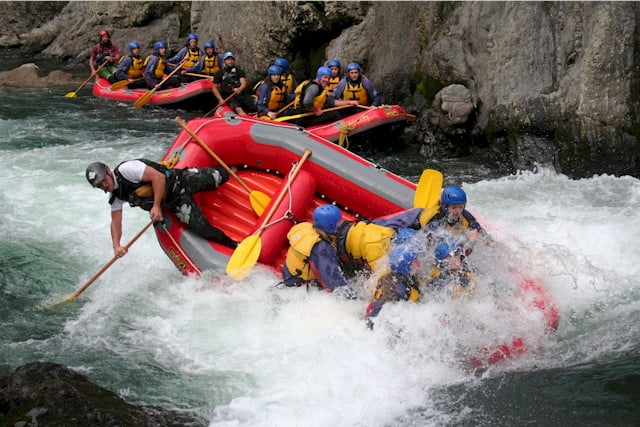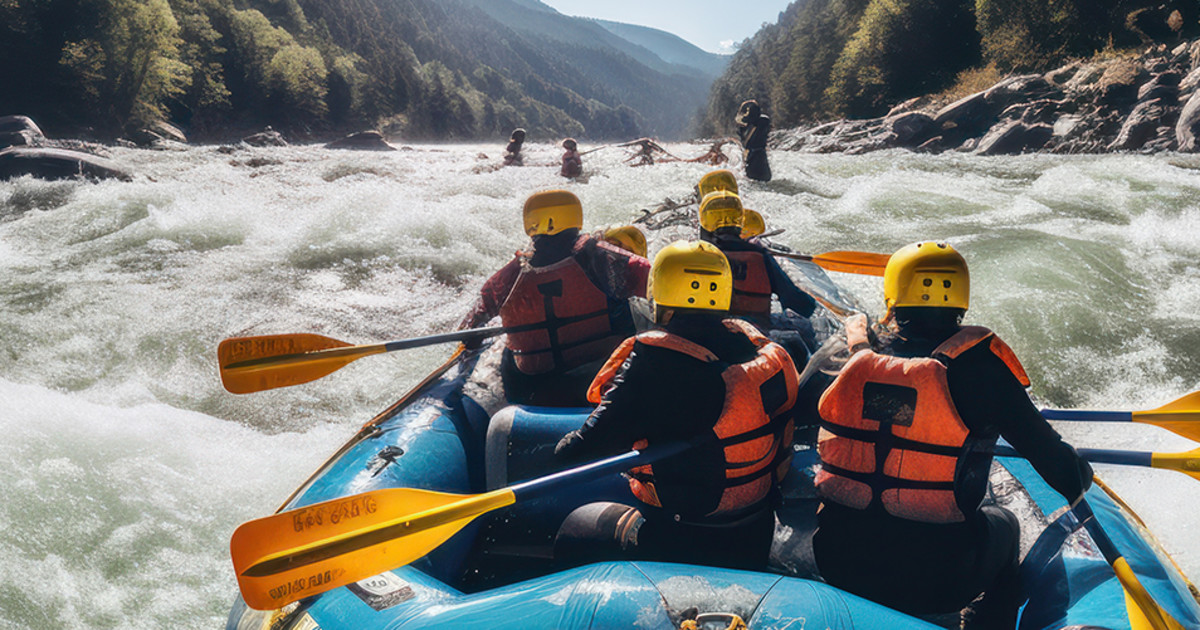Insider's Overview to White Water Rafting Colorado Rapids
Insider's Overview to White Water Rafting Colorado Rapids
Blog Article
Necessary Skills for Water Rafting
Mastering the art of water rafting needs a combination of accurate abilities and knowledge to navigate the unforeseeable currents of rivers, making it a thrilling yet possibly dangerous activity. From understanding the ins and outs of river dynamics to swiftwater rescue strategies and seamless group interaction, the journey down the river requires a blend of proficiency and adaptability. White Water Rafting Colorado.
Paddling Methods
Grasping effective paddling techniques is vital for browsing water plethoras safely and effectively. Appropriate paddling not only propels the raft forward yet also aids in steering and steering via differing water conditions. One basic method is the forward stroke, where paddlers dip the blade completely into the water and pull it back along with the boating to produce propulsion. Timing and control are crucial to make sure that all paddlers remain in sync, making the most of the power of each stroke.
Apart from the forward stroke, the draw stroke is vital for making fast adjustments or pulling the boating closer to a things. By positioning the paddle blade perpendicular to the water's surface and drawing the water in the direction of the raft, paddlers can properly change the vessel's direction. The backstroke offers as a valuable tool for backing up or slowing down the raft when required.
River Reviewing
Effective paddling strategies, such as the forward stroke and draw stroke, play an essential role in browsing and interpreting river currents, a skill called river analysis. River reading includes the capability to analyze the rate, depth, and direction of the water flow to make enlightened decisions while browsing rapids. By comprehending how the water moves around challenges and with various channels, rafters can select the most effective route to safely go across the river.
One trick aspect of river analysis is recognizing various kinds of currents, including waves, hydraulics, and swirls, and understanding how they can affect the boating. Eddies, for example, are areas where the water flows in a circular motion, usually providing opportunities for rest or critical maneuvers. Waves can indicate the visibility of barriers or rocks, calling for quick adjustments in paddling technique. Hydraulics, commonly called "openings," are locations where water recirculates back upstream, positioning prospective risks to boatings.
Grasping the skill of river analysis is vital for pleasurable and safe rafting experiences, enabling paddlers to navigate challenging waters with confidence and accuracy.

Swiftwater Rescue
Understanding swiftwater rescue strategies is essential for water rafting lovers to respond properly in emergency situation circumstances on fast-flowing rivers. Swiftwater rescue entails a collection of specialized abilities and knowledge intended at securely extracting individuals from swift-moving water. One essential aspect of swiftwater rescue is recognizing the dangers present in fast-flowing rivers, such as strainers, undercut rocks, and strong currents, to intend and execute successful rescue operations.
Correct tools is vital for swiftwater rescue, consisting of throw bags, rescue ropes, headgears, and individual flotation devices. Rafting enthusiasts should be experienced at using this equipment in high-stress situations to make sure the safety and security of themselves and others. In addition, swiftwater rescue methods commonly entail teamwork and coordination among you could try here rafters to carry out complicated rescue maneuvers effectively.
Training in swiftwater rescue is highly advised for individuals participating in water rafting tasks, as it equips them with the necessary skills to manage emergency situations promptly and efficiently. White Water Rafting Colorado. By comprehending and exercising swiftwater rescue techniques, water rafting fanatics can enhance their safety and that of their fellow rafters on challenging river explorations
Team Communication
Efficient synergy in water rafting depends heavily on seamless interaction amongst staff member to make sure worked with and risk-free navigating via tough river conditions. Clear and concise interaction is important for the success of any type of rafting expedition. Group members must have the ability to effectively convey vital details such as paddling commands, caution signals, and navigational instructions.
In the commonly unforeseeable and fast-paced atmosphere of river rafting, prompt and accurate interaction can mean the difference between a possible catastrophe and an effective run - White Water Rafting Colorado. Each employee plays a crucial role in the overall interaction procedure, whether it be paying attention diligently to the guide's directions, communicating info to various other paddlers, or signaling for help when needed
Developing a typical language and interaction system prior to hitting the water is vital. This makes certain that everybody gets on the same page and comprehends just how to connect effectively during the rafting journey. By cultivating a society of open communication and mutual regard, rafting teams can boost their efficiency and safety and security on the river.

Safety Procedures
In the context of water rafting, the foundation of team interaction developed throughout explorations is further reinforced through strict adherence to safety protocols. Safety and security protocols are extremely important in making certain the health of both rafters and guides during water rafting tours. One crucial security procedure is the appropriate wearing of personal flotation devices (PFDs) by every person on the boating. PFDs are crucial in emergencies to keep individuals afloat and give buoyancy. Additionally, rafters need to be fluent in swiftwater rescue methods and methods in case of a person dropping over the top or if the raft capsizes.
Another key safety and security view website protocol is the detailed briefing supplied by overviews prior to getting started on a rafting journey. This instruction generally includes info on paddling techniques, what to do in case of numerous emergency situations, and signals utilized for interaction throughout the journey. It is essential to have designated safety kayakers accompanying the team to supply instant assistance if required. By strictly adhering to these safety and security methods, water rafting tours can be both secure and exhilarating for all participants included.
Verdict
In final thought, grasping essential abilities for water rafting is vital for a secure and delightful experience on the river. Paddling strategies, river reading, swiftwater rescue, group communication, and safety protocols are all crucial parts that add to an effective rafting trip. By refining these skills, rafters can browse difficult waters with confidence and make sure the safety of themselves and their group members.
Understanding the art of water rafting requires a mix of accurate abilities and knowledge to browse the unpredictable currents of rivers, making it a thrilling yet potentially unsafe activity. By positioning the paddle blade perpendicular to the water's surface area and drawing the water towards the boating, paddlers can effectively alter the vessel's instructions.Comprehending swiftwater rescue strategies is essential for water rafting fanatics to react efficiently in emergency situation situations on fast-flowing rivers.Efficient synergy in water rafting counts heavily on smooth interaction among team participants to make certain collaborated and risk-free link navigating with challenging river problems.In verdict, mastering crucial skills for water rafting is important for a enjoyable and risk-free experience on the river.
Report this page